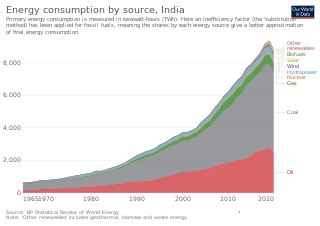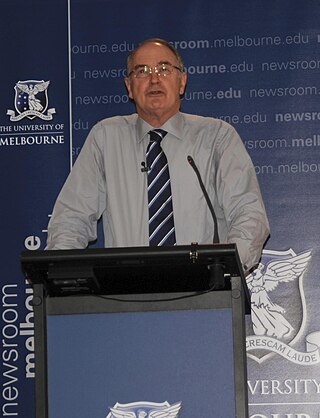| Jiangsu Ligang Power Plant | |
|---|---|
 | |
| Country |
|
| Coordinates | 31°56′26″N120°04′33″E / 31.9405°N 120.0759°E |
| Owner(s) | |
| Power generation | |
| Nameplate capacity |
|
Ligang Power Station is a large coal-fired power station in China. [1]
| Jiangsu Ligang Power Plant | |
|---|---|
 | |
| Country |
|
| Coordinates | 31°56′26″N120°04′33″E / 31.9405°N 120.0759°E |
| Owner(s) | |
| Power generation | |
| Nameplate capacity |
|
Ligang Power Station is a large coal-fired power station in China. [1]

Coal is a combustible black or brownish-black sedimentary rock, formed as rock strata called coal seams. Coal is mostly carbon with variable amounts of other elements, chiefly hydrogen, sulfur, oxygen, and nitrogen. Coal is a type of fossil fuel, formed when dead plant matter decays into peat and is converted into coal by the heat and pressure of deep burial over millions of years. Vast deposits of coal originate in former wetlands called coal forests that covered much of the Earth's tropical land areas during the late Carboniferous (Pennsylvanian) and Permian times.

Electricity generation is the process of generating electric power from sources of primary energy. For utilities in the electric power industry, it is the stage prior to its delivery to end users or its storage.

A power station, also referred to as a power plant and sometimes generating station or generating plant, is an industrial facility for the generation of electric power. Power stations are generally connected to an electrical grid.

CLP Group and its holding company, CLP Holdings Ltd, also known as China Light and Power Company, Limited, is an electricity company in Hong Kong. Incorporated in 1901 as China Light & Power Company Syndicate, its core business remains the generation, transmission, and retailing of electricity. It also has businesses in a number of Asian markets as well as EnergyAustralia in Australia. It is one of the two main electricity power generation companies in Hong Kong, the other being Hongkong Electric Company.

Ensuring adequate energy supply to sustain economic growth has been a core concern of the Chinese Government since the founding of People's Republic of China in 1949. Since the country's industrialization in the 1960s, China is currently the world's largest emitter of greenhouse gases, and coal in China is a major cause of global warming. However, from 2010 to 2015 China reduced energy consumption per unit of GDP by 18%, and CO2 emissions per unit of GDP by 20%. On a per-capita basis, it was only the world's 51st largest emitter of greenhouse gases in 2016. China is also the world's largest renewable energy producer, and the largest producer of hydroelectricity, solar power and wind power in the world. The energy policy of China is connected to its industrial policy, where the goals of China's industrial production dictate its energy demand managements.

A coal-fired power station or coal power plant is a thermal power station which burns coal to generate electricity. Worldwide there are over 2,400 coal-fired power stations, totaling over 2,000 gigawatts capacity. They generate about a third of the world's electricity, but cause many illnesses and the most early deaths, mainly from air pollution.

Since 2013, total primary energy consumption in India has been the third highest in the world after China and United States. India is the second-top coal consumer in the year 2017 after China. India ranks third in oil consumption with 22.1 crore tons in 2017 after United States and China. India is net energy importer to meet nearly 47% of its total primary energy in 2019.

China is the largest producer and consumer of coal and the largest user of coal-generated electricity in the world. The share of coal in the Chinese energy mix declined to 55% in 2021 according to the US Energy Information Agency.

Ross Gregory Garnaut is an Australian economist, currently serving as a vice-chancellor's fellow and professorial fellow of economics at the University of Melbourne. He is the author of numerous publications in scholarly journals on international economics, public finance and economic development, particularly in relation to East Asia and the Southwest Pacific.

China's electric power industry is the world's largest electricity producer, passing the United States in 2011 after rapid growth since the early 1990s. In 2021, China produced 8.5 petawatt-hour (Pwh) of electricity, approximately 30% of the world's electricity. In 2019, China had produced 7.3 petawatt-hour (PWh) of electricity, more than the next three countries combined.
The Guodian Beilun Power Station is a coal-fired power station in Beilun District, Ningbo, Zhejiang, China. With an installed capacity of 5,000 MW, it is the 7th largest coal-fired power station in the world.. The station generates energy by five 600 MW and two 1,000 MW units, which is fuelled by coal.
The Waigaoqiao Power Station is a coal-fired power station in Pudong, Shanghai, China. With an installed capacity of 5,000 MW, it is the 7th largest coal-fired power station in the world.. The power stations produces up to 11.4 TWh of energy annually. It is owned by China Power Investment, a local power company.
The Zouxian Power Station, also known as Zouxian Power Plant, is one of the largest power stations in China, with an installed capacity of 4,540 MW. The facility is located in Shandong Province, and is operated by China Huadian Corporation. It runs on coal.
The Tuoketuo Power Station is the largest coal-fired power station in the world. The plant is located in Togtoh County, Hohhot, Inner Mongolia, China. The plant is estimated to have been one of the ten most carbon emitting coal-fired power plants in the world in 2018, at 29.46 million tons of carbon dioxide, and relative emissions are estimated at 1.45 kg per kWh. The plant was commissioned in November 1995 by the Tuoketuo Power Company, which currently owns and operates the power station.
Emba Hunutlu power station is a 1320 MW coal fired power station in Turkey in Adana Province. As of 2022 it is the largest Chinese foreign direct investment in the country. Despite opposition from many environmental organisations the plant was started up in 2022 and burns Russian coal as it is cheaper than other coal. The plant is less than 2 km from another coal-fired power station, İsken Sugözü.
İsken Sugözü power station is a 1320 MW operational coal fired power station in Turkey.
Atlas power station or Atlas Enerji İskenderun power station is a 1200-megawatt coal-fired power station in Turkey in İskenderun in Hatay Province, which burns imported and local coal and receives capacity payments. Construction was financed by Garanti Bank, Akbank and Işbank. Its owner, Diller, is on the Global Coal Exit List.